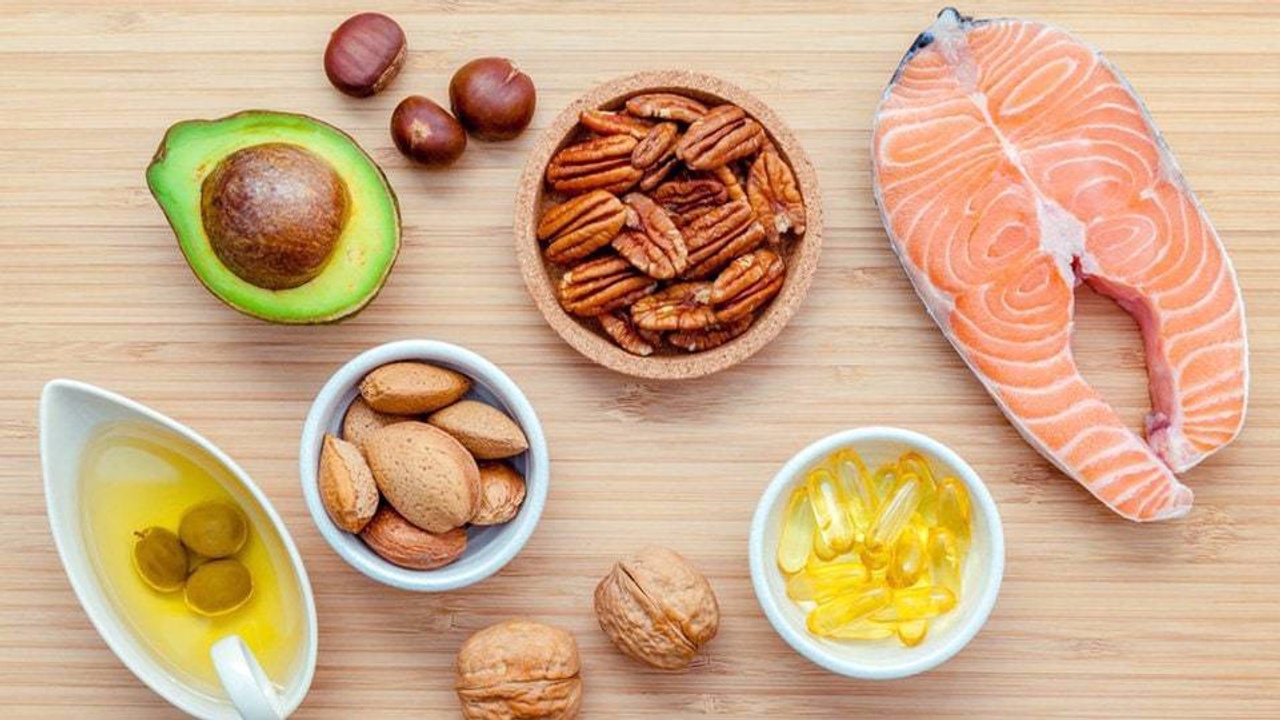Why you Should Understand Fats and Fatty Acids
Apr 15, 2021
Fats are one of the most feared and misunderstood elements of our diet. For decades we were taught that fat will make us fat and destroy the health of our heart and circulatory system.
Times have moved on thankfully and our understanding of the vital importance of fats has grown. Particularly the fatty acids they supply and how these can accelerate disease or offer some protection. This is something you REALLY need to be clued up on.
What are fatty acids?
Essential fatty acids are a group of fats that are biologically active and absolutely vital to our health and the health of every single cell in the body. They are called essential because we have to get them from our diet. Our body cannot manufacture them.
There are 2 essential fatty acids – omega 3 and omega 6. These fatty acids play such a vast and varied role in human physiology. It is really rather mind blowing. They are involved in maintaining the structure of cell membranes, myelin sheath (a specialised fatty coating on the outer side of nerve cells), and even the eyes. They are also metabolic building blocks that the body uses to create several important substances, one of the most important being a group of communication compounds called ‘prostaglandins’, that regulate things like the pain response and inflammation. It is the impact on inflammation that we are going to focus on here, as the impact upon health can be profound.
There are 3 types of prostaglandin – Series 1, Series 2, and Series 3. Series 1 and series 3 prostaglandins reduce inflammation and tone down the inflammatory response. Series 2 on the other hand switch on and ramp up inflammation. Different fatty acids give rise to different prostaglandins. Remember that as we go through.
So why does this even matter? Well, inflammation is a very very important reaction in the body and is necessary to our defences – fighting infection and assisting in the repair of damaged tissue. So no inflammation = big problems. However, inflammation that goes beyond a level that is helpful can start to cause untold damage, as we will soon explore. So keeping inflammation at a healthy level is key. Fatty acid intake can influence this for the better or the worse.
Fatty acid balance
We are reliant on omega 3 and omega 6 from our diet. They are essential and we cannot manufacture them. The thing is, our intake of these fatty acids cannot just be willy nilly. We need to get some balance.
Why do we need this balance? It will influence what by products are produced, and long term problems can arise. If we consume too much of one of them, then we can unleash a whole world of problems upon our physiology. The group I am referring to are the omega 6 fatty acids. This group of essential fatty acid are indeed vital to the body. Omega 6 fatty acids are used for normal brain function, growth, and development. However, we only need a very VERY small amount of these per day in order to achieve their physiological goals. Once we go past this level, these fatty acids get shuttled down a different metabolic pathway, and are turned into series 2 prostaglandins – the type that switch on and exacerbate inflammation.
The problem is, omega 6 fatty acids are found in many foods naturally, plus our intake has shot through the roof in the last 3 decades as we were encouraged to ditch saturated fats and instead opt for ‘heart healthy’ vegetable oils, which it turned out are composed in such a way that their fatty acid profile is predominantly omega 6.
Omega 3 fatty acids on the other hand have a positive influence on inflammation. The omega 3 fatty acids EPA and DHA are fed into metabolic pathways that produce the anti-inflammatory series 1 and series 3 prostaglandins.
It doesn’t take a genius to work out that more omega 3 and less omega 6 can begin to have a positive impact upon inflammation.
So why does any of this even matter?
Well, inflammation that gets out of control, or becomes chronic (i.e. continual for long periods of time) can create serious problems and increase our susceptibility to certain diseases. Here are just a few examples
Heart disease
Heart disease is the biggest killer in the developed world. Fact. There are many risk factors, of varying degrees, that are associated with cardiovascular disease. One fact is clear, though, and that is that cardiovascular disease is an inflammatory condition.
The inside of our blood vessels is lined with a very thin layer called the endothelium. Inflammation can cause pockets of damage within this endothelium and the body responds immediately to repair it by laying down a delicate criss-cross lattice of fibres. Some of these fibres can protrude out into the vessel, a bit like a net. Materials that are in circulation in the blood, such as cholesterol, can get trapped in this net. Cholesterol can oxidise and cause further damage to the vessel walls. This damage continues until the immune system gets involved and a plaque is formed. Low-grade chronic inflammation of the endothelium can also increase blood pressure. The endothelium is highly metabolically active. One of its main roles is to manufacture and release nitric oxide, which relaxes the muscular walls of the vessels, causing the vessel to reduce the pressure within it. Nitric oxide also protects the endothelium against damage. On-going mild inflammation can affect endothelial cells’ ability to release nitric oxide.
So what causes this inflammation? Some of the more obvious agents include smoking, excessive drinking, and environmental pollutants. But the biggest factor in the modern world is the type of fats we are eating via vegetable oils and processed foods.
Cancer
Cancer is the second biggest killer in the Western world, and one that is increasing at an alarming rate. Today, one in three of us is likely to be in some way affected by the disease. That is a shocking statistic. It is important to understand that cancer is an outcome with a multitude of variables that may actually cause it. This is part of the reason why it has proved such a difficult adversary to beat. Inflammation is but one of many links, but it is at least one that we can have some influence over.
When tissues get inflamed for long periods of time, the DNA within them can eventually become damaged. DNA codes genes that determine how our cells function and what they do on a day-to-day basis. The damage to the DNA from chronic inflammation can affect genes that regulate the way in which cells divide and replicate. In short, cells can begin to divide uncontrollably, forming the early stages of a tumour. Inflammation is capable of a secondary attack, too, though. During the early stages of tumour growth, inflammation occurs in the area which can become involved in the generation of new blood vessels to the tumour; this triggers accelerated tumour growth to the point where a few rogue cells become cancer.
Type-2 diabetes
Whilst this condition generally arises due to a breakdown in the functioning of the insulin system, insulin resistance, prolonged raised blood sugar etc, there is another influence that can exacerbate it and that is of course inflammation. Chronic low-grade inflammation has been shown to affect the functionality of insulin receptors. Insulin is already struggling to get cells to take notice during insulin resistance; inflammation makes matters worse, and the stage is soon set for the development of serious problems.
Inflammatory disorders
It is to be expected that inflammatory conditions by nature should also be aggravated by this diet. Arthritis, eczema, psoriasis, inflammatory bowel disease – all of these can be activated by the wrong dietary choices.
So how do we address this with diet???
Effective results can be achieved with the smallest steps. A few simple dietary tweaks that take minimal effort can have a serious impact on everything described above.
Increase your intake of omega 3
Aim to increase your intake of omega-3 fatty acids every single day. The key foods here are oily fish, such as salmon, mackerel, herrings, anchovies, sardines etc. There are those who try to convince us that omega 3 found in seeds will deliver the same benefits as those found in oily fish, but alas they won’t. I have had the great pleasure of working directly with the world’s leading authorities on fatty acids, from every continent. There are a million and one facts that these academic and clinical superpowers disagree on, but there is one thing that every one of them is in agreement on – that marine-derived omega-3 fatty acids deliver the most powerful and effective protective benefits. Walnuts, flax seeds, chia seeds etc. are better than nothing, but they come in the form of the ALA omega 3, which needs converting to EPA and DHA. Human beings are very poor at converting ALA into EPA and DHA, succeeding with maybe eight to ten per cent if we are lucky. The only exception to this rule is pregnant women, who can ramp up conversion to many times this. So even if you eat gallons of the stuff, you will be getting microscopic traces of EPA, which delivers 90% of the benefits associated with omega 3. Some animals, such as fish, are exceptionally good at this conversion, which is why their tissues are packed with these vital fats.
If you are vegetarian (I understand; I was for vegetarian for more than 20 years), be aware that there will, for now at least, be a nutritional gap in your diet. There is now technology to extract EPA from algae, and these supplements will soon be hitting the market. Once this happens, vegetarians will be easily catered for. Supplementation with highly concentrated EPA and DHA daily is also a good idea for everyone. Eating fish every day will get a little boring.
Reduce your intake of omega 6
The next step is to reduce your intake of omega 6 fatty acids, which is remarkably straightforward. The main focus will be the types of oils you use on a daily basis. If you are currently using vegetable oil, corn oil, sunflower oil, soy oil, and/or margarine, take a large bin bag, fill it with these oils and throw them in the dustbin, never to be seen again. These products are almost pure omega 6. Just the smallest spoon full will take you above and beyond your daily requirement, so tipping the balance is incredibly easy. When it comes to cooking oils, there are only two that I use: olive oil and coconut oil. Olive oil comprises largely a fatty acid called oleic acid which belongs to the omega 9 group. These fats have zero effect upon fatty acid balance whatsoever. Plus, oleic acid has benefits for heart health, too. Coconut oil is my go-to choice when I want to do
any high-temperature work. Olive oil is pretty heat-stable, but at high temperatures, like high-heat stir-frying or roasting, it can start to denature a little bit. Coconut oil is completely heat-stable, even at very high temperatures. Coconut oil also has the added benefit that it contains no polyunsaturated fatty acids (the types of fats that omega 3 and omega 6 belong to), so it has absolutely no impact upon fatty acid balance whatsoever. When it comes to replacing hideous margarines, I’d go for butter every time. Don’t be scared of it; it is a million times better for you than margarines ever could be – just don’t eat an entire pack a day! Your body knows what to do with these naturally occurring fats.




